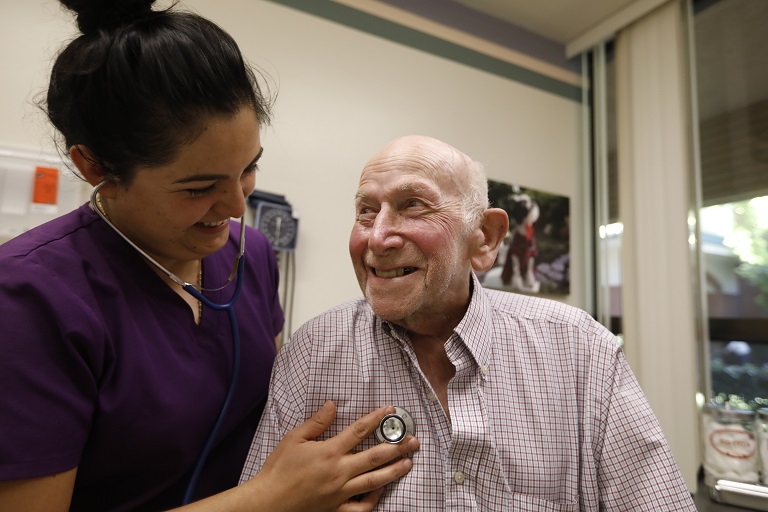Most Doctors Are Now Using Telehealth
Physicians are using telehealth widely, and telehealth can assist in stroke recovery, according to two recent studies.
Telehealth Adoption & LeadingAge Advocacy
Nearly 85% of physicians are now using telehealth, and nearly 70% say their organization is motivated to continue, a recent American Medical Association (AMA) survey found.
“Many physicians foresee providing telehealth services for chronic disease management and ongoing medical management, care coordination, mental/behavioral health, and specialty care,” according to an AMA press release.
To bring wider telehealth adoption, the industry needs continued insurance coverage of telehealth and payer reimbursement. Telehealth accessibility depends on continued coverage for audio-only telehealth visits and visits that take place in the patient’s home, said the release. LeadingAge is advocating for these recommendations, which are outlined in its 2022 Policy Priorities.
The top three patient barriers to using telehealth are technology, digital literacy, and broadband internet access, physicians said. LeadingAge CAST supports this view and has provided Broadband in Affordable Housing resources to help providers bring broadband connectivity to their communities affordably. The LeadingAge 2022 Policy Priorities also include creating funding opportunities for congregate affordable low-income housing providers to collectively apply for and receive broadband internet connectivity to the building and to their residents’ units, to ensure equitable access to services, including access to healthcare via telehealth.
Telehealth Aids Stroke Recovery
A recent study of older adults recovering from strokes found that adding behaviorally focused telerehabilitation to self-managed motor-gaming has outcomes similar to in-clinic Constraint-Induced Movement (CI) therapy.
The self-managed telehealth approach also saves valuable therapist time. It requires only one-fifth as much time with a therapist. That way, the therapist can spend more time on behavioral interventions that can enable a patient to better use a partially paralyzed arm–and potentially help more patients. Results appeared in eClinicalMedicine and in McKnight’s Senior Living.
Study participants lived in the community and were experiencing mild/moderate upper extremity one-sided weakness more than six months after having strokes. The study outcomes were everyday arm use and motor speed/function.
CAST Telehealth and RPM Technology Tool
If you are considering implementing telehealth in your organization, be sure to use the LeadingAge CAST Telehealth and RPM Selection Tool. It provides a white paper with valuable background on how to choose these types of technology solutions, as well as an interactive guide, online selection tool, product matrix, and provider case studies.
This tool is one of nine LeadingAge CAST Technology Selection Tools:
- Data Analytics Technology Selection Tool.
- EHR Technology Selection Tool.
- Functional Assessment and Activity Monitoring Technology Selection Tool.
- Health Information Exchange (HIE) Technology Selection Tool.
- Medication Management Selection Tool.
- Safety Technology Selection Tool.
- Shared Care Planning and Coordination Technology Selection Tool.
- Social Connectedness and Engagement Technology Selection Tool.
- Telehealth and RPM Selection Tool.

Most Recommended
October 15, 2025
 Shutdown Week Three: Impact of Ongoing Closure on Affordable Housing
Shutdown Week Three: Impact of Ongoing Closure on Affordable Housing
December 10, 2025
Fiscal Year (FY) Funding 2026
October 07, 2025
Immigrant Workforce Matching Program Brings Workforce Relief
Recently Added
December 19, 2025
House Moves Forward on Affordable Housing Reforms
December 19, 2025
White House Cannabis EO Paves Way for Research, Access
December 19, 2025
LeadingAge Urges DHS to Maintain "Public Charge" Guardrails
December 18, 2025



